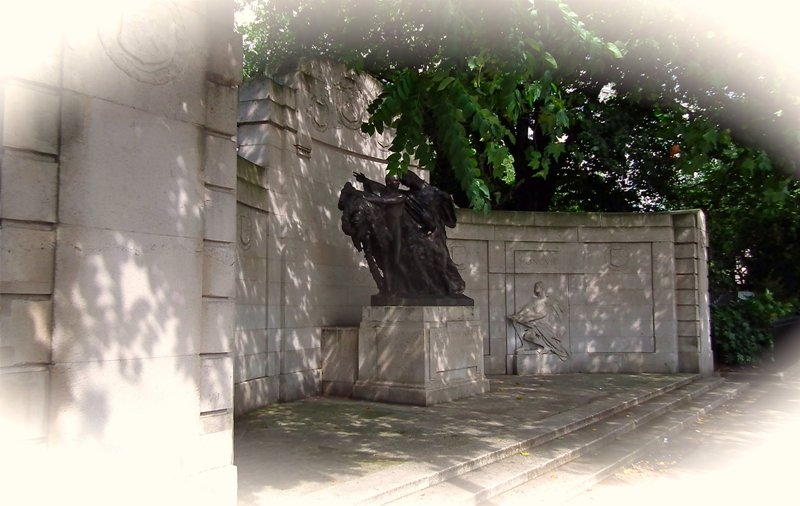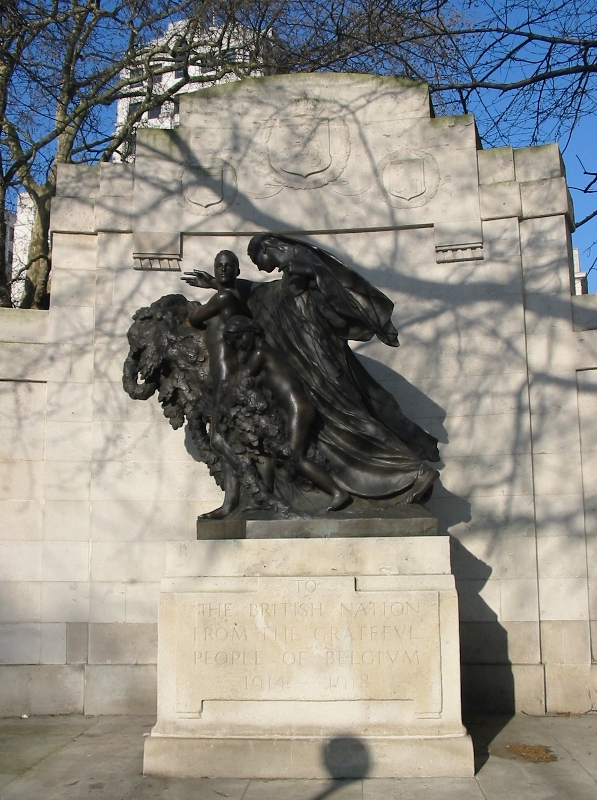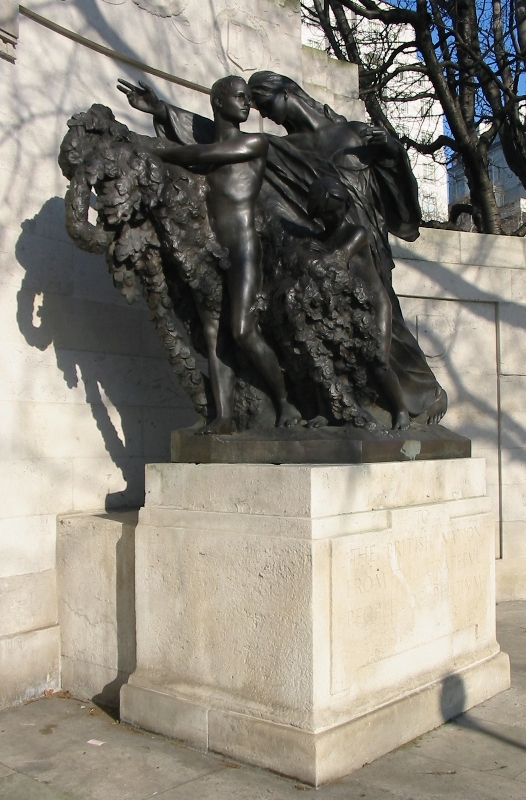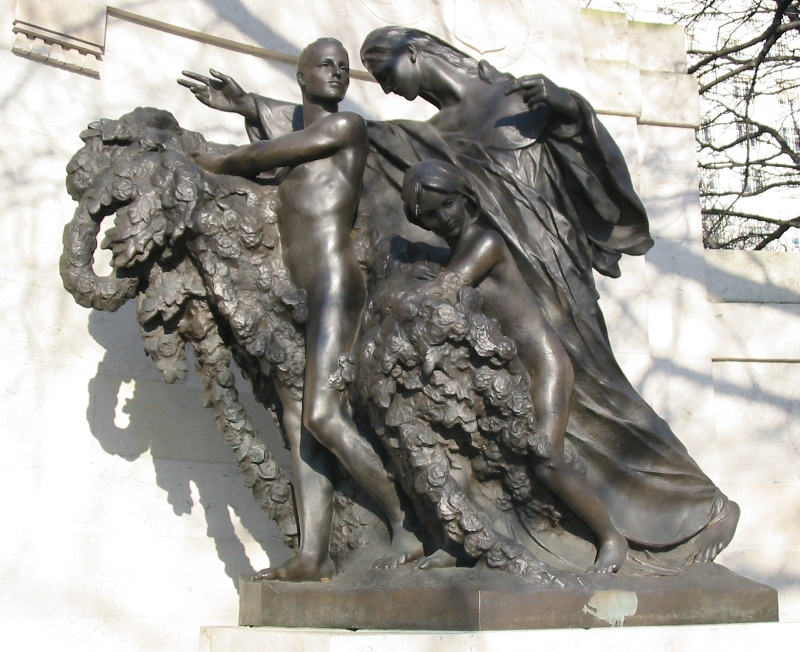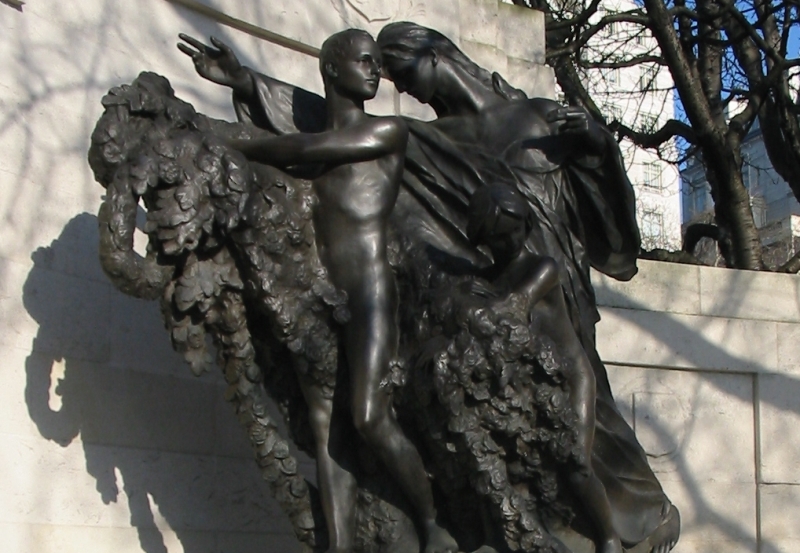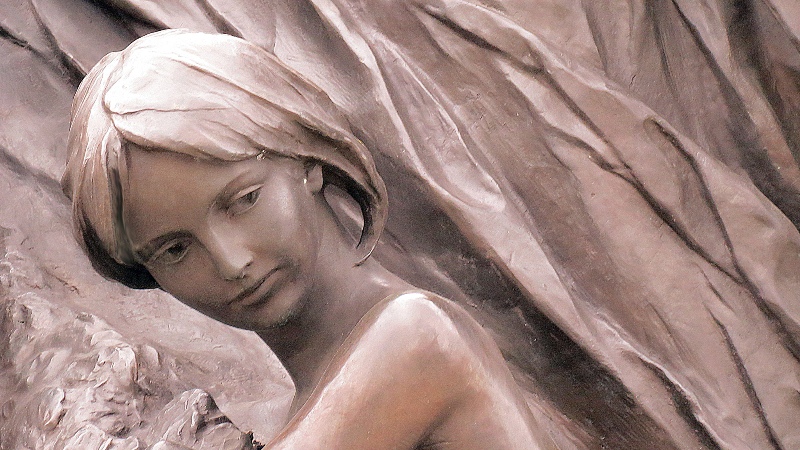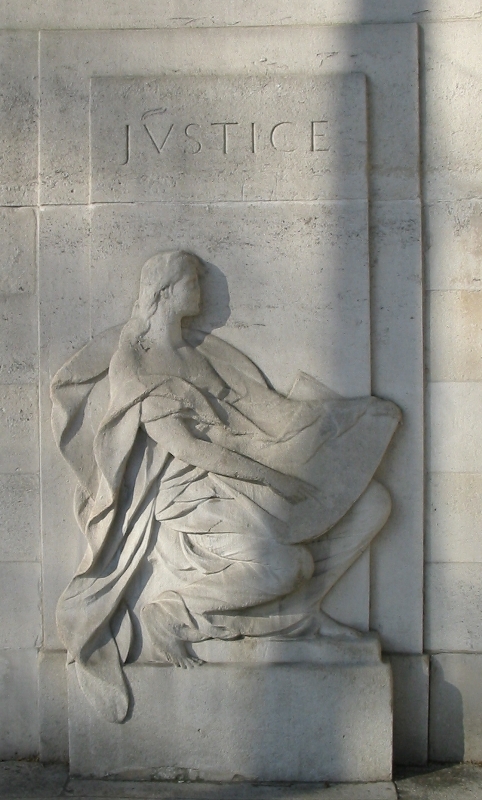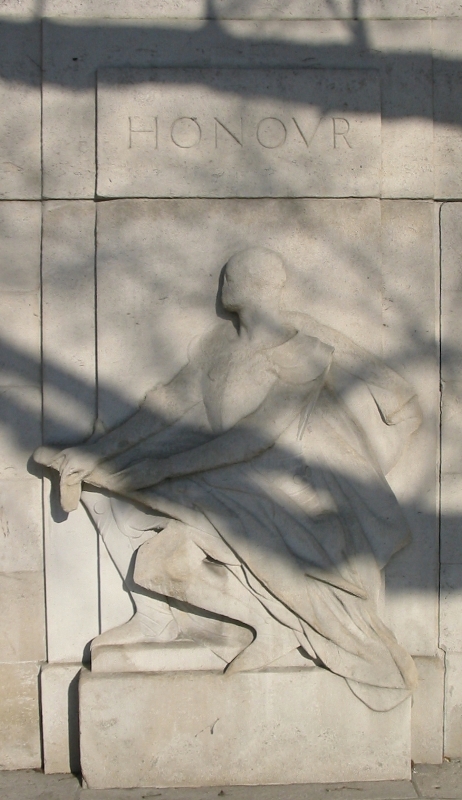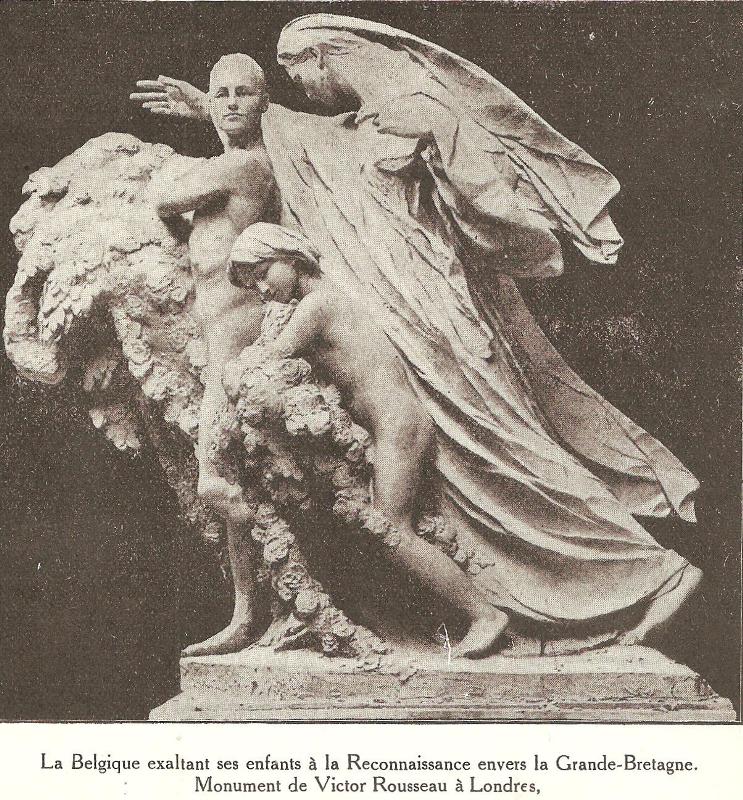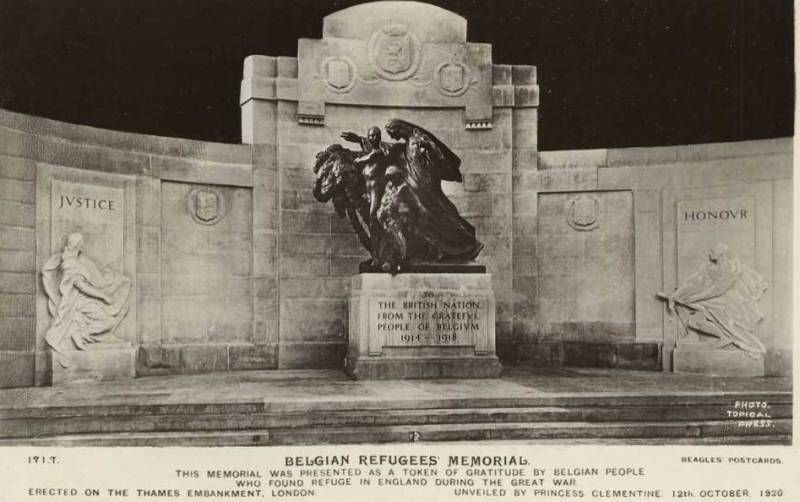|
Localisation de ce monument - Situering van het
monument: Victoria Embankment Gardens, Victoria
Embankment.
Coordonnées GPS - GPS-coördinaten:
+51°30'31.40", -0°7'14.26".
Inscriptions sur le monument - Opschriften op het
monument:
"TO
THE BRITISH NATION
FROM THE GRATEFUL
PEOPLE OF BELGIUM
1914 - 1918
JUSTICE / HONOUR"
Histoire - Geschiedenis
Le monument de la reconnaissance belge. Les
Belges réfugiés en Angleterre ont décidé d'élever un
monument en témoignage de leur reconnaissance vis-à-vis du
peuple britannique. Le travail a été confié au sculpteur
Victor ROUSSEAU; le monument se développe sur une longueur
de 16 mètres ; sa hauteur centrale est de 6 mètres. Des deux
côtés de l'hémicycle se sillouettent les figures de la
"Justice" et de l'"Honneur". À droite, un chevalier bardé de
fer, offre son épée à la Belgique. Le groupe principal, en
bronze, (l'hémicycle et ses "reliefs" seront en pierre
argentée de Portland), réunit trois figures: La Belgique,
drapée de deuil, commentant d'un geste patriotique toute la
bonté de la nation anglaise, se penche sur deux enfants (Source:
"Le musée et l'encyclopédie de la guerre; recueil mensuel
illustré de documents et pièces rares. Publié avec le
concours des amateurs, collectionneurs, chercheurs,
historiens, archivistes, bibliothécaires français, alliés,
neutres", Tome II (Février 1917 - Février 1918), Directeur :
J. GRAND-CARTERET).
Belgian War Memorial: Dit memoriaal is
opgericht om de Britse inspanningen bij de verdediging van
België te herdenken. In de herfst van 1918 richtte men in
Londen een comité op onder het voorzitterschap van twee
Belgische prinsessen om dit memoriaal op te richten. Sir
reginald BLOMFIELD ontwierp het memoriaal en de Belgische
beeldhouwer Victor ROUSSEAU maakte het beeldhouwwerk. Het
memoriaal staat aan Victoria Embankment, Londen (Bron:
VAN DER AUWERA, Sigrid, "De herdenking van de Grote Oorlog
en Flanders Fields. Een beknopt overzicht in 25 staten").
Belgian Monument to the British Nation. Also
called Anglo-Belgian Memorial, this memorial was a gift from
the Belgian nation to thank Great Britain for their
assistance to Belgium in the 1914-1918 war. It was unveiled
on the 12th October 1920 when Leon DELACROIX, the Belgian
Prime Minister, offered the memorial to the British nation,
the gift being formally accepted by Lord CURZON. The actual
unveiling was performed by Princess CLEMENTINE of Belgium.
The memorial was erected as a token of gratitude by Belgian
people who had found refuge in England during the German
occupation of their country. The central bronze group was
the work of the sculptor Victor ROUSSEAU and it emerges that
a sculptor from the Royal College of Art called Francis was
to work on the initial carving of the side figures
representing "Honour" and "Justice" as well as the shields
representing the regions of Belgium. ROUSSEAU would supply
models of the figures and shields for Mr.Francis to work on,
and would finish off the faces and heads of the two figures
himself. There were nine shields in all and some wreaths.
The shields represented Brabant, Anvers (Antwerp), Liege,
Hainault, Namur, Limbourg, Luxemburg and two for Flanders.
In July 1920, and whilst the memorial was still being worked
on, intruder[s] had entered the site of the memorial and
damaged the plaster models of the two figures of "Justice"
and "Honour" and some of the shields with a hammer.
Thereafter and until the unveiling, a nightwatchman was
employed to guard the site. The memorial then features
bronze figures representing a Belgian woman accompanied by a
boy and a girl both carrying garlands. The inscription below
reads "To the British Nation from the grateful people of
Belgium, 1914-1918". As part of the Portland Stone surround
we see two figures of a man and a woman. One represents "Honour"
and the other "Liberty". Sadly the figures have become worn
after years of exposure to the London traffic as have the
shields. The bronze remains a magnificent work it having at
least weathered the elements. Victor ROUSSEAU lived from
1865 to 1954. He was born at Feluy-Arquennes, in the
province of Hainault, the son of a stone-cutter. He studied
from 1879 to 1880 at the Academie des Beaux-Arts in Brussels
and won the Godecharle prize in 1890 which enabled him
travel to England, France and Italy. He spent two years in
Paris and several months in Florence, and returned to
Belgium in 1894. From 1901 to 1919 he was Professor of
Sculpture at the Academie des Beaux-Arts in Brussels and its
Director from 1919 to 1922 and 1931 to 1935. During his
career exhibitions of his work were held in London, Madrid
and the USA. He won the Grand Prix de Rome in 1911. ROUSSEAU
has works on view in Brussels, Antwerp, the Chateau de
Mariemont, Berlin, Vienna, Copenhagen, Liege and Glasgow. In
1926 Rousseau presented a statuette to the Chelsea Arts Club
as a token of gratitude for the help given by the club to
Belgian refugee artists during the 1914-18 war (Source:
UK National Archives).
Inauguration - Inhuldiging: 12/10/1920
Ce monument ne comporte pas de noms - Er staan geen namen op
deze monument
|
